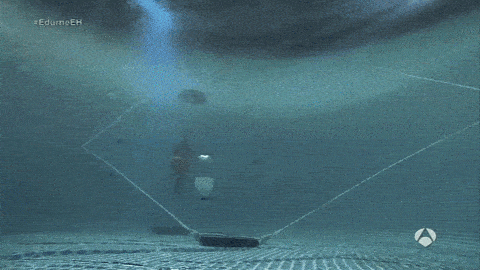Nuclear torpedoes are a fascinating and terrifying example of military technology and destructive power coming together.
But let’s clear the air immediately: this isn’t exclusive to one country’s weapons. The nuclear arms race has spread beyond its original borders, involving countries worldwide.
A Brief History of Nuclear Torpedoes
To fully grasp the development of nuclear torpedoes, one must travel back in time to the height of Cold War tensions.
The United States and the Soviet Union come to mind when we think about nuclear weapons because of their rapid development and deployment of a large stockpile. Despite this competition, a global tendency toward nuclear proliferation emerged between the 1950s and the 1970s.
During this time, many militaries considered incorporating nuclear payloads into various platforms. The desire to embed nuclear capabilities into any and all implements is analogous to the current craze for “smart” gadgets.
As a result of this mindset persisting for almost 30 years, nuclear warheads have been integrated into various platforms, from ballistic missiles to air-to-ground and air-to-air missiles. Torpedoes stood out as a potential option for nuclear modification in this sea of innovation.
The Anatomy of a Nuclear Torpedo
We must dissect their composition and operation to unravel the power of nuclear torpedoes. A modern torpedo typically comprises five primary components: the warhead, compressed air tank, fuel tank, power cabin, and propulsion system. In the context of guided torpedoes, two additional elements, the seeker and control system, come into play.

Focusing on the Torpedo Warhead
Early torpedoes had simple warheads with explosives directly put into the head and fuzes at numerous locations. Progress led to standardized warheads, many of which were cylindrical.
These warheads were either in the torpedo shell, linked to the fuel tank, and seeker by adapters. This design philosophy increased torpedo warhead interchangeability.
An airdropped anti-bunker munition with a W34 nuclear bomb is the MK 105 penetration bomb. The W34 nuclear warhead matches the MK101 air-dropped anti-submarine depth charge.
Compact nuclear torpedoes like the MK43, with the identical W34 nuclear warhead, demonstrate their potential. Early nuclear torpedoes had the power of 11,000 tons of TNT, showing that they were designed to eliminate dangers and increase undersea explosions’ lethality.
The Underwater Explosive Dynamics
Because of the way they explode underwater, nuclear torpedoes can cause a lot of damage. To understand this, we need to know how underwater explosions spread and move energy. When a torpedo explodes underwater, the bubble area that forms moves back and forth gets smaller and gets bigger. This repeating process sends energy out into the mass of water around it.

Water can’t be compressed like air can, which is part of what makes underwater blasts unique. The force of the collision depends on how big and big the bubble is. For example, when a traditional 500-kilogram torpedo goes off, it can create a hole about 10 meters in diameter.
A nuclear bomb with the same force as several thousand tons can create a hole in deep water that is more than 800 meters across. This huge hole forms almost instantly, and then it keeps moving back and forth.
The Lethal Efficiency of Nuclear Torpedoes
Nuclear torpedos don’t destroy things by vaporizing ships. Instead, their real power comes from the large underwater kill zone they create when they explode. This process is dangerous for both ships and submarines.
In history, the T-5 torpedo test by the Soviet Union in 1955 is a good example. Armed with a nuclear warhead equal to 4,800 tons of TNT, the explosion began at a depth of 20 meters east of Xindi Island. Two of the three test submarines that were stationed 6.5 nautical miles from the center of the explosion sank, and the third was badly damaged.
The way energy is released and transferred here is similar to how standard explosives work. The water’s inability to be compressed and the force of the explosion created a huge hole that affected ships and subs nearby. This shows that the power of early nuclear weapons doesn’t depend on their size since smaller versions can still do a lot of damage underwater.
Unraveling the “Status-6” Conundrum
The word “Status-6” has been a source of mystery and debate in the past few years. Many people think this is a new type of nuclear torpedo, but the Russian Ministry of Defense calls it a “marine multi-purpose system.” The “Status-6” is unlike a normal torpedo because it is an unmanned deep submersible with a nuclear warhead and power source. Its targets are not just naval ships but also coastal towns and ports.
With a charge that is equal to 100 million tons of TNT, this strange weapon has an explosive force that is hard to believe. By exploring at depths of 1,000 to 2,000 meters on the seabed, huge cavitation bubbles are made, which start a chain reaction that can cause a tsunami that can wash away port towns.
The Broader Implications
As we learn more about nuclear torpedoes, we learn about their scary science and their wider effects. The history and science of these weapons show how dangerous nuclear explosions are by nature. The idea that there could be a lot of damage, especially in heavily populated coastal places, is a scary reminder of how destructive modern military technology can be.
Nuclear weapons are a terrifying example of how smart people can be and how hard they will work to get power. They tell us that even though we are amazed by our ability to come up with new ideas, we must also be aware of the responsibility of having so much power. In a world where everything is linked, the choices we make today will affect people for many years to come.



